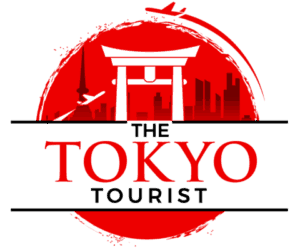Deprecated: mb_convert_encoding(): Handling HTML entities via mbstring is deprecated; use htmlspecialchars, htmlentities, or mb_encode_numericentity/mb_decode_numericentity instead in /home2/thetoky7/public_html/wp-content/themes/acabado/functions.php on line 2119
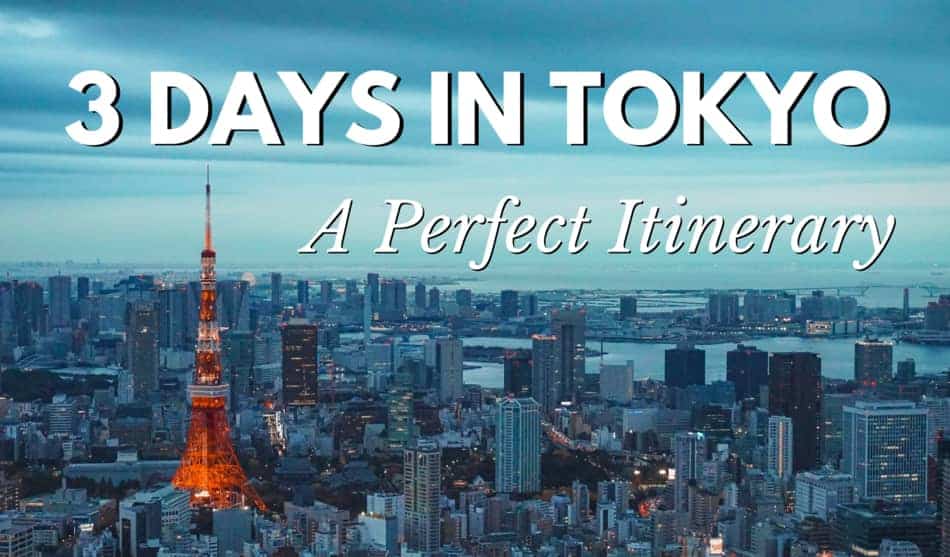
Got only three days to spend in Tokyo? It’s easy to stress out because that’s just 72 hours and it can go quite fast. With the right itinerary, though, you can plan every day to the minute so you can fit in all the activities and landmarks you want to see.
So what can you do in Tokyo in three days? Try following this itinerary to make the most of your trip:
Day One: Shibuya Crossing, Harajuku, Meiji-jingu Shrine, Nezu Museum, Yoyogi Park, Omotesando, Roppongi Hills Complex
Day Two: Asakusa-jinja Shrine, Senso-ji Temple, Asakusa, Ueno-koen Park, Mitsubishi Ichigokan Museum, Akihabara
Day Three: Shinjuku, Imperial Palace Area, Yasukuni-jinja Shrine, Kitanomaru-koen Park, Tokyo Metropolitan Government Offices
Do you want hour-by-hour breakdowns of the above itinerary so you don’t miss a thing? Read on, as I’ll give you a schedule you can follow for each of your three exciting days in Tokyo.
Let’s get started!
Day One
Arrival
Assuming you’re flying into Tokyo on your first day, you’ll have arrived at either the Haneda Airport International or Narita International Airport. Haneda has a single terminal at the JR EAST Travel Service Center, which is accessible by the Tokyo Monorail 2F.
There are two airport terminals through Narita, 1 and 2-3. Both terminals should pop you out around the JR EAST Travel Service Center and the Exchange Office.
From there, you’d want to get your JR Pass. You can then get on the Narita Express, which you’ll want to take to Shibuya.
Don’t know what Japan Rail Pass is? Read all about it here.
8:30 a.m. Harajuku to Meiji-jingu Shrine at Yoyogi-koen Park and Nezu Museum
If you did all your traveling the day before, then you’d start your day already in Tokyo. In that case, let’s begin your morning a little differently. Hop a subway or train to take you to Harajuku. You can either ride the Chiyoda subway line through Harajuku Station/Meiji-Jingumae or ride the JR Yamanote Line right to Harajuku Station.
Once you get to Harajuku, take some time to witness the beauty of the Meiji-jingu shrine at Yoyogi-koen Park. Depending on which day you’re in Tokyo, expect the park to be busy. That’s especially true on the weekends, when events and festivals attract people to the park.
Make sure you see the shops on Omotesando, which is a major street in Harajuku. If you have the time, keep walking east. You’ll come across the Nezu Museum, which is known for its beauteous gardens.
11 a.m. Onwards to Shibuya
If you did squeeze in the time for the Nezu Museum, then it’s an easy enough walk to get to the Ginza subway. All you have to do is cross the Aoyama-dori and Omotesando intersection and head west. Once on the subway, ride to Shibuya. This should be a 15-minute trip, so it won’t take you long.
Get off the subway, following the Hachiko exit. Now you can enjoy the Shibuya Crossing, a populous destination in the city. It’s often incredibly heavy with foot traffic, especially when big events are going on. There are tons of boutiques and department stores to get lost in, but don’t stay for too long! There’s still more to see and do on your first day in Tokyo.
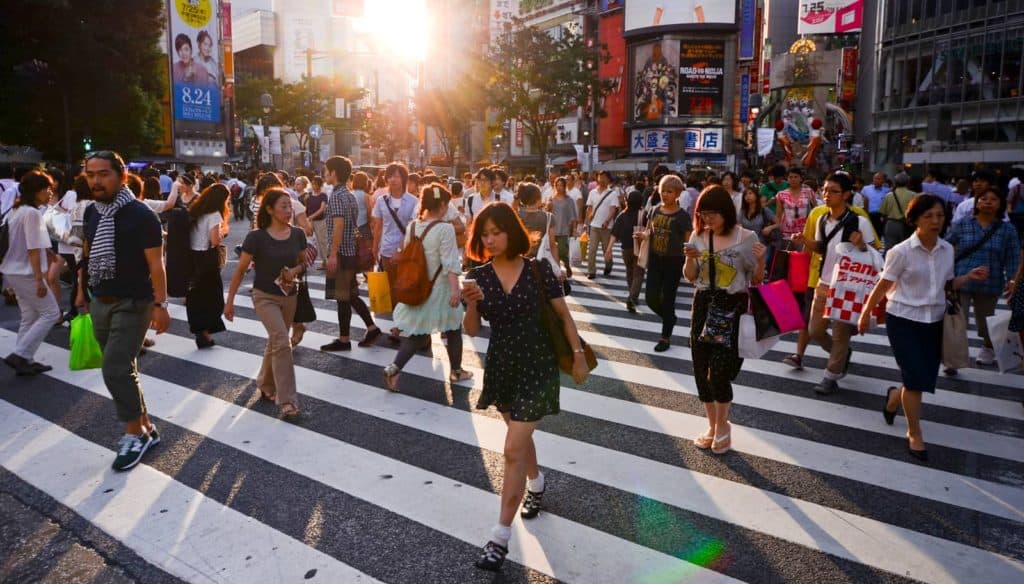
1 p.m. Lunch in Shibuya
There are countless restaurants in the area to choose from, so you certainly have your pick. You can try sushi at Uoriki, yakitori at Morimoto or Yakitori Tetsu (which is the cheaper of the two), soba noodles at Fukudaya, or teishoku at Echigoya Sandayu. Let your cravings and your wallet guide your decision.
2 to 2:30 p.m. Travel to Roppongi
After an hour to an hour and a half of dining, it’s time to take another ride so you can continue your day. This time, you want to be on the JR Yamanote Line, which you should ride to Ebisu Station. You’re not done yet, as it’s time to get on the Hibiya Line subway east. After two stops, you should be at your destination, Roppongi. This travel should take roughly 30 minutes.
3 p.m. Roppongi Hills Complex
While you’re in Roppongi, I recommend you take some time to see the Roppongi Hills Complex. To do so, you’ll have to go to the Mori Tower and ride 52 stories up to the Tokyo City View observation deck. It’s a gorgeous sight one of the best vantage points you’ll get of Tokyo!
5 to 6 p.m. Dinner in Roppongi
After you finish with the breathtaking views of the observation deck, you’ve probably worked up quiet an appetite. You might as well stay in Roppongi and round off your day here with some delicious dinner. You can find teppanyaki at Restaurant Omae XEX, pizza at Pizzkaya Roppongi (yes, there’s pizza in Japan), and even Italian at Il Figo Ingordo.
If you want to be adventurous and eat Japanese fare, try ramen at Ippudo Roppongi Branch and French and Japanese fusion food at Narisawa or Takazawa.
7 to 8 p.m. Nightlife or Go Home
Depending on how tired you are, you might elect to stay and see Roppongi at night. This is one of the best-known areas of Japan when it comes to nightlife, so you would have made the right choice. But before you go partying in Roppongi, you really need to read this article. Tokyo might not be as safe as you think.
For some culture, you can visit art museums like Musee Tomo, Suntory Museum of Art, Mori Art Museum, and the National Art Center Tokyo. The Nogi-jinja Shrine is here if you missed it earlier in the day.
Otherwise, you can spend your time at Tokyo Midtown, which is an entertainment, dining, and shopping complex with a Ritz-Carlton Hotel right in the middle. It’s easy to spend hours here, but watch the time, because you don’t want to be out super late.
Wait until you see what’s in store for your second day in Tokyo.
Day Two
8 a.m. Asakusa-jinja Shrine and Senso-ji Temple
Good morning! It’s your second day in Tokyo and there’s a lot you can do. Hopefully, you weren’t out too late partying it up in Roppongi, because you’ll want to be awake and traveling before 8 a.m. to make the most of your day.
Once you leave your hotel, you’ll need to get on the Ginza subway and ride it until you arrive to Asakusa. This is where you’ll find several buildings that are definitely worth seeing, such as the Asakusa-jinja Shrine and the Senso-ji Temple.
If you have the time, be sure to stop into the Edo-Tokyo Museum and have a look around. Also, if you can get tickets, you’d want to head to Ryogoku from Asakusa to see a live sumo wrestling event at Ryogoku Kokugikan. This is definitely worth doing at least once! In fact, it’s one of the most awesome things about Japan! Make sure you keep reading until the end of this article, because I’ll talk more about live sumo matches. Make sure you keep reading until the end of this article, because I’ll talk more about live sumo matches.
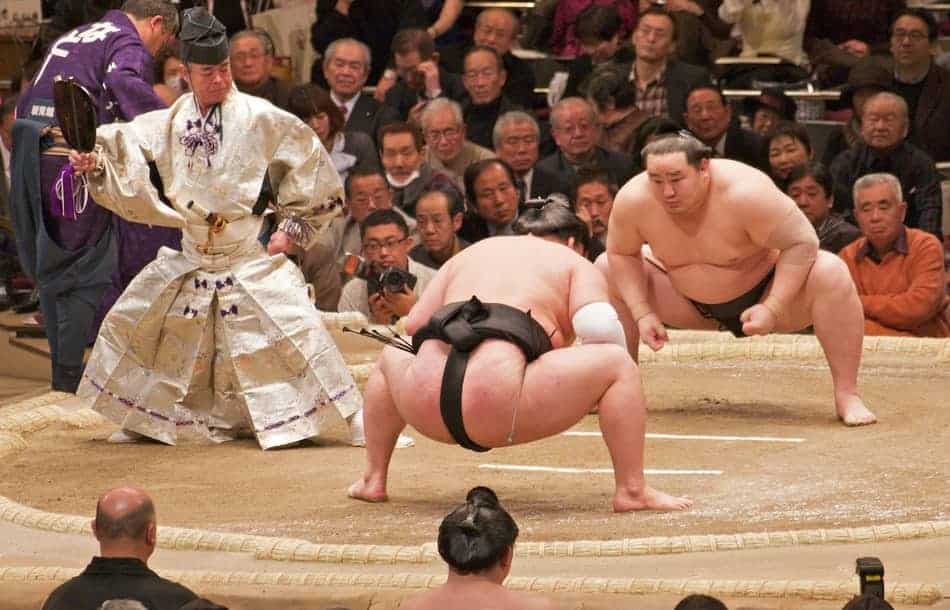
11 a.m. Tosho-gu Shrine, Ueno-koen Park, and Tokyo National Museum
After you’ve had a few hours to enjoy the shrines and the museum in Asakusa, it’s time to move on. (If you’ve fallen in love with Asakusa you should check out the world’s tallest tower – Tokyo Skytree.) You want to get back on the Ginza subway. This time, ride it west for three stops. You’ll arrive at Ueno soon after.
There’s tons to do here, so expect to spend two or three hours in this part of Tokyo. For another landmark worth seeing, don’t miss the Tosho-gu Shrine. Ueno-koen Park, also known as Ueno Park, will keep you busy, too. After all there’s a zoo in there. You’ll also find cherry blossom trees, cafes and restaurants, and the Tokyo National Museum around here. Take some time to really take it all in and have some lunch while you’re at it.
2 p.m. Tokyo Station and Mitsubishi Ichigokan Museum
When you’ve decided you’ve had your fill of Ueno Park, get on the JR Yamanote Line south. You want to ride it until you get to Tokyo Station. This is another nice place to eat lunch if you can’t find anywhere at Ueno Park that jumps out at you (unlikely, but hey, it happens).
When you get there, head into the Mitsubishi Ichigokan Museum. Nearby areas of interest are Hibiya-koen Park and the Bridgestone Museum of Art. Take your time exploring these areas, as your day is essentially free from here.
5 p.m. Akihabara aka Electric Town
If you’re looking for a place to unwind and relax for a few hours, try a maid café at Akihabara. These are quite the attraction since the employees dress up in maid costumes. You’ll also find many electronics and tech shops here. Akihabara can be quite a popular destination, especially at night, when the billboards and buildings light up the streets.
Once you’re done exploring all Akihabara has to offer, head back to your hotel for the night. You’re probably quite tired from getting up so early anyway! While you won’t have as early a start for your last day in Tokyo, you do want to be well-rested.
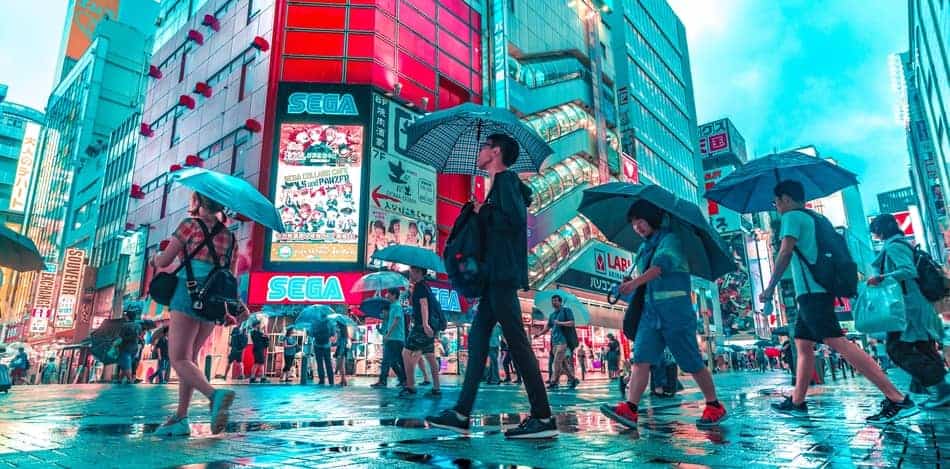
Day Three
9 a.m. Shinjuku and Imperial Palace Area
You wake up refreshed and ready to tackle the third and final day of your Tokyo trip. The first thing you want to do after you get dressed and showered is head to the Tokyo Station. You can get there by subway or train.
Upon your arrival, head east on foot until you reach the Imperial Palace East Garden. Plan to spend a good amount of time here since the garden is quite large, roughly 2.3 million square feet. It also gives you a chance to get a glimpse into the inner palace area, which is seriously a treat.
You probably won’t get through all the gardens because that’s a lot to cover by foot, but do as much as you can. When you’re done, make sure you leave through the Kitahanebashi-mon exit. This’ll make it most convenient to continue on your way.
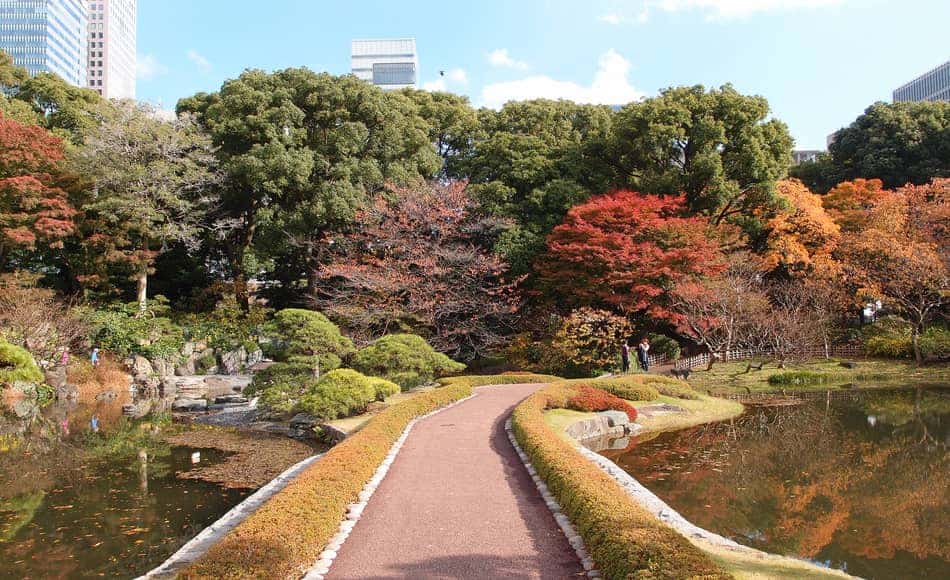
11:30 a.m. Yasukuni-jinja Shrine and Kitanomaru-koen Park
I hope your feet aren’t too tired yet since you’ll want to continue walking after you’ve left the Imperial Palace East Garden. Through the Kitahanebashi-mon exit, head north. You’ll come upon the Kitanomaru-koen Park.
Continue along the park to the Yasakuni-jinja Shrine. Near the shrine, you’ll see the Yushukan Museum, a war museum told from a nationalist perspective. It’s got a touch of a reputation, that’s for sure, so it’s worth checking out.
1 p.m. Lunch in Shinjuku, Tokyo Metropolitan Government Offices
Once you’re done with the park and the museum, get on the Shinjuku Line subway and take it west. Get off the train when you arrive in Shinjuku. Now that you’re here, it’s time to chow down.
There are nearly countless restaurants in Shinjuku, so you shouldn’t have a hard time finding a place to enjoy some lunch. If you miss American food, Brooklyn Parlor serves burgers and fries. Otherwise, you might try izakaya at Hibiki Shinjuku-ten, yakitori at Shousuke, sukiyaki at Imahan, or dim sum at Din Tai Fung. You can also find tempura at Tenkuni or Tsunahachi.
Now that your stomach is full, you can head over to the Tokyo Metropolitan Government Offices, specifically the observation deck. Depending on the weather, you can get a pretty good view of Mt. Fuji and an even better view of most of Tokyo. It’s not one you’ll want to skip.
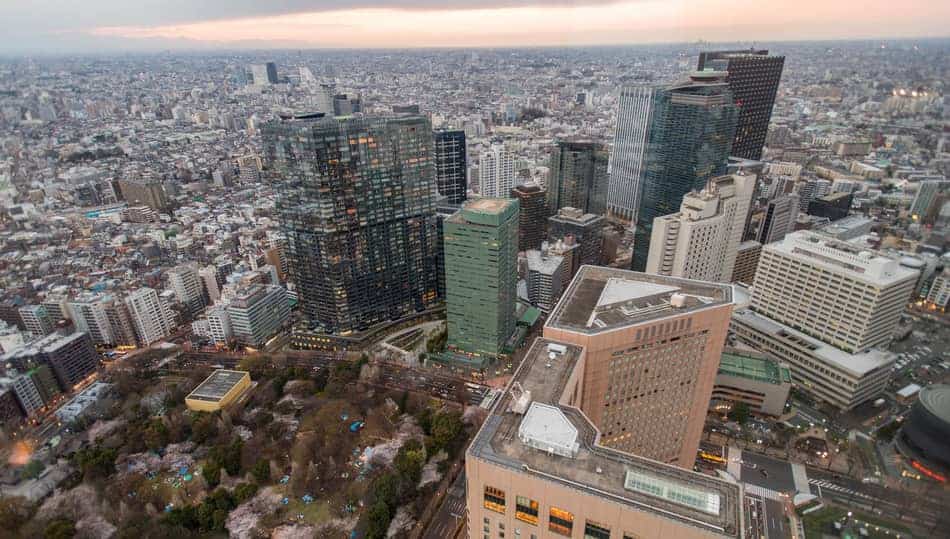
5 p.m. Dinner and Rest (Your Choice)
The way you spend the rest of the day is up to you. You can head back to one of the areas you enjoyed in the past few days, such as Ginza, Shibuya, and Shinjuku. You could grab a bite to eat at any of the plentiful restaurants. You might again choose to engage in some nightlife at Roppongi.
If you’re in Tokyo in September, May, or January, you might be lucky enough to be able to see a live sumo tournament. These last for about two weeks and only occur during those three months. You can also try an animal café. While cat cafes are incredibly popular in Japan, you can pet plenty of other fuzzy friends while sipping a hot beverage at Tokyo’s various animal cafes. There’s bunny cafes and even some that have hedgehogs, owls, and dogs.
If you liked the theming of the maid café, try a robot restaurant in Shinjuku. You might also elect to spend some more time shopping in Tokyo Midtown. If it’s early enough, you could even return to the Imperial Palace East Garden and pick up where you left off. Most days, the garden does close at 5 p.m. though, so you’d have to plan accordingly.
Once you feel like you’ve spent your day well, you can head back to your hotel, shower, pack, and rest up. Tomorrow will be a big travel day, but you sure did spend your three days well!
Other Considerations
As you follow this three-day Tokyo itinerary or plan your own, keep the following points in mind:
- Since you’ll be doing a lot of walking around outside, you don’t want your three days in Tokyo to be hampered by rain. While rain can occur any day, the rainiest times of year in Japan are June and July. Avoid traveling during those months if you can.
- Also, in July until September, weather in Tokyo can be very hot and humid, much like it is here in the US during the summertime. Again, since you’ll be outside so much, plan your trip around the weather.
- The subway metro system you’ll need to get around Tokyo requires a PASMO card. If you’ve ever been to New York City and used a Metro card, the concept is the same. You put a certain amount of money on the card and then run it through the turnstiles whenever you want to ride a subway. PASMO cards are available at train stations and airports. Don’t forget yours!
- You might have to stop at a convenience store to use an ATM with an American credit or debit card. ATMs throughout the city will not accept your card, so make sure you’re prepared with another source of funding for your trip.
- When you eat a meal in Japan, you’re not supposed to tip. Doing so could offend your waitstaff and lead to a potentially embarrassing situation for you.
- While Tokyo is regarded as a safe city, don’t be careless. Be aware of pickpockets and scammers. Keep your wits about you. Don’t bring all your money with you each time you leave your hotel. That’s what a hotel safe is for.
Conclusion
There are countless things to see and do in Tokyo, but with a tight, precise itinerary, you can hit most of the big spots and activities even if you only have three days to do so. I hope you enjoyed this guide and you were inspired by the itinerary. Feel free to tweak or otherwise change it any way you want so it matches your interests and level of enthusiasm. Good luck and enjoy yourself!
If you have any questions, you can always leave a comment, and I’ll do my best to answer it. 🙂
Why not pin it for later? You can also follow the The Tokyo Tourist on Pinterest. 🙂
